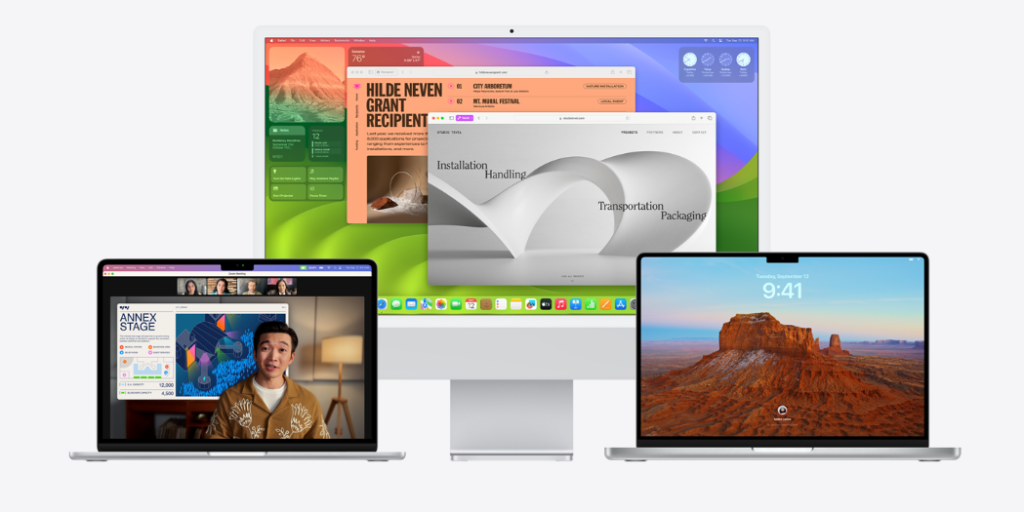Are you experiencing Bluetooth connectivity issues on your Mac running macOS Sonoma? You’re not alone.
Many users have encountered the frustrating problem of Bluetooth Not Available on their Mac devices after updating to macOS Sonoma.
In this blog, we’ll explore various troubleshooting steps and solutions to help you fix the macOS Sonoma Bluetooth connectivity issues.
How To Fix MacOS Sonoma Bluetooth Not Available?

To fix macOS Sonoma Bluetooth not available, you can restart your Mac, reset bluetooth module, update macOS. Additionally, you can delete bluetooth .plist files, unplug external devices and force restart your Mac, and reset the SMC.
1. Restart Your Mac
Restarting your Mac can resolve temporary software glitches that may be causing the Bluetooth not available issue.
A simple restart can reinitialize the system’s hardware and potentially fix any minor bugs that are affecting Bluetooth functionality.

- Click on the Apple logo in the top left corner of your screen.
- Choose “Restart” from the dropdown menu.
- Wait for your Mac to shut down completely and then turn back on.
2. Reset Bluetooth Module
Resetting the Bluetooth module can fix persistent issues with Bluetooth connectivity by refreshing the Bluetooth hardware on your Mac.
This step can help to resolve conflicts and errors that are preventing Bluetooth from working correctly.

For macOS Big Sur and earlier:
- Hold down the Shift + Option keys and click on the Bluetooth menu icon in the menu bar.
- Choose “Debug” and select “Reset the Bluetooth module.“
- Restart your Mac after the reset to ensure changes take effect.
For macOS Monterey or later:
- Open “Terminal” from the Applications > Utilities folder.
- Type the following command:
sudo pkill bluetoothd - Enter your admin password when prompted and press Enter.
- The Bluetooth daemon will restart, potentially fixing any issues.
3. Update MacOS
Outdated software can lead to compatibility issues and bugs, such as the Bluetooth not available error.
Updating macOS to the latest version ensures that you have all the current fixes and improvements from Apple.
- Click on the Apple logo in the top left corner of your screen.
- Select “System Preferences” from the dropdown menu.
- Click on “Software Update.“

- If an update is available, click “Update Now” or “Upgrade Now” to install the latest version of macOS.
- Follow the on-screen instructions to complete the update.
4. Delete Bluetooth .plist Files
The Bluetooth .plist files on your Mac store user settings for Bluetooth devices. If these files become corrupted, they can cause the Bluetooth not available error.
Deleting these files will force your Mac to create fresh, uncorrupted files.
- Close any applications that may be using Bluetooth.
- Open Finder, then press Command + Shift + G to bring up the “Go to Folder” dialog.
- Type
/Library/Preferences/and press Enter. - Find and delete the
com.apple.Bluetooth.plistfile. You may need to enter your admin password to do this. - Empty the Trash to permanently remove the file.

- Restart your Mac to generate a new .plist file for Bluetooth settings.
5. Unplug External Devices And Force Restart Your Mac
External devices can sometimes cause conflicts that result in the Bluetooth not being available.
Unplugging these devices and force restarting your Mac can help to resolve these conflicts by giving the system a fresh start without any potential interference.
- Shut down your Mac and unplug all external devices, including USB drives, external monitors, and other peripherals.
- Once everything is disconnected, press and hold the power button on your Mac for about 10 seconds to perform a force restart.
- Wait a few seconds, then press the power button again to turn on your Mac.
- Check to see if the Bluetooth functionality has been restored after the system boots up.
6. Reset The SMC (System Management Controller)
The SMC is responsible for managing low-level functions on your Mac, including Bluetooth hardware.
Resetting the SMC can resolve issues related to power management and hardware functionality.
For MacBooks with a non-removable battery:
- Shut down your Mac.
- Press and hold the Shift, Control, Option, and Power buttons simultaneously for about 10 seconds.
- Release all the keys at the same time.
- Press the power button to turn on your Mac.
For MacBooks with a removable battery:
- Shut down your Mac and disconnect the power adapter.
- Remove the battery.
- Press and hold the power button for 5 seconds.
- Reconnect the battery and the power adapter.
- Turn on your Mac by pressing the power button.
For desktop Macs:
- Shut down your Mac.

- Unplug the power cord.
- Wait 15 seconds, then plug the power cord back in.
- Wait another 5 seconds, then press the power button to turn on your Mac.
7. Use MacOS Recovery To Reinstall MacOS
As a last resort, if all other solutions fail, you can try reinstalling macOS.
This can fix deep-rooted system issues that might be affecting Bluetooth functionality.
- Back up all important data on your Mac using Time Machine or another backup method.
- Restart your Mac and immediately hold down
Command+Rto boot into macOS Recovery mode. - When the macOS Utilities window appears, select “Reinstall macOS” and click “Continue.“
- Follow the on-screen instructions to reinstall macOS.
- After the reinstallation is complete, set up your Mac and check if the Bluetooth issue has been resolved.
8. Contact Apple Support

If all the above steps fail to resolve the Bluetooth issue, it’s likely that you’re facing a more serious problem that might require professional assistance.
Contacting Apple Support can provide you with expert help, whether it’s additional troubleshooting steps, service, or repair options.
